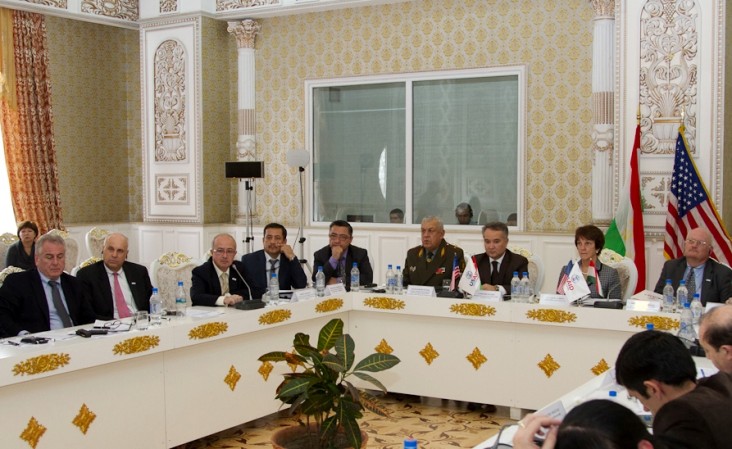
For Immediate Release
United States Ambassador Susan M. Elliott and the U.S. Agency for International Development (USAID) hosted the launch of the USAID Tuberculosis (TB) Control Program, a new regional program to improve diagnosis and treatment of tuberculosis in Tajikistan. This program is an extension of TB control activities initiated under past USAID projects such as TB CARE I, Quality Health Care Project and the Dialogue on HIV and TB Project.
While joint collaboration between USAID, the Government of Tajikistan, and other partners to combat TB has resulted in stabilization of TB over the past five years, the latest Global TB Report confirms an alarming increase in rates of multi-drug resistant TB in all five Central Asian countries. This five-year USAID TB Control Program aims to reduce the burden of TB and the development of multi-drug resistant TB (MDR-TB) in Tajikistan. The program will focus on improving access to diagnosis and treatment for vulnerable groups, supporting a patient-centered system of care, and strengthening laboratories and other parts of the health system in Sughd, Khatlon, and the Rasht Valley, including policy development at the national level.
Ambassador Elliott noted the great progress made by USAID and the Tajik government to tackle TB, but acknowledged that the fight is not over.
The program is implemented by a consortium of partners, led by Project HOPE and including the Royal Netherlands Association for Tuberculosis Control (KNCV), the International Organization for Migration, and AIDS Foundation East-West.
The USAID TB Control Program, with anticipated budget of $13.2 million over five years, is another example of U.S. Government assistance to improve the health of Tajik citizens. USAID grant assistance to Tajikistan now averages $30 million each year of which approximately 30% is directed to healthcare.
Related Press Releases
- 10,000 Community Health Volunteers Receive Equipment from USAID’s Community Capacity for Health Program
- Afghanistan Ministry of Public Health Launches First Data Warehouse for the Health Sector with help from USAID
- USAID and the National Center or Healthy Lifestyles Promotion Conduct Training for Journalists on Tuberculosis Reporting







Comment
Make a general inquiry or suggest an improvement.